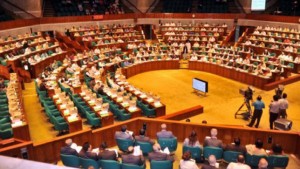What makes the 21st century city the harbinger of a postcapitalist world is that for the first time in modern history the network can transcend the market.
Imagine yourself in Amsterdam exactly 400 years ago. What word would you use to describe the extraordinary economic and social system around you?
There are a stock exchange, a currency market and a central bank. The most important social institution is something called a ‘company’—not just any old company but the VOC (the Dutch East Indian Company), the most powerful in the world.
There are other clues. The trade fleet of the United Provinces is bigger than all the trade fleets of Europe combined. Amsterdam is the ‘bookshop of the world’. And this is a republic.
So what, using the language available to you as a citizen of the Dutch Republic, do you call this kind of society?
Today it’s obvious. This is the first flourishing of mercantile capitalism. And the transition had been under way for at least 100 years. While London possessed some of the working parts of the new system, only Amsterdam had all of them.
The English ambassador, Sir William Temple, summed up the puzzlement of the rest of the world:
They have no native commodities towards the building or rigging of the smallest vessel … for havens they have not any good upon their whole coast … nor has Holland grown rich by any native commodities, but by force of industry; by improvement and manufacture of all foreign growths; by being the general magazine of Europe, and furnishing all parts with whatever the market wants or invites …
But there was no word for this new system. Even acute observers like Temple, who could accurately analyse what was happening, could not name it. The word ‘capitalism’ would not appear until the mid-19th century, when Marx, Proudhon and Louis Blanc used it to describe the exclusion of producers from asset ownership.
The ‘postcapitalism’ thesis suggests that, today, we are in a similar state to the white-ruffed burghers who stare at us from Rembrandt’s The Night Watch, We know something big and new is happening but we lack the vocabulary to describe it—in part because we do not know where it will lead.
Network effects
Let’s list the mysterious new phenomena that surround us. First, there are the goods voluntarily produced for free: open-source software runs 70 per cent of all mobile phones and 90 per cent of the world’s supercomputers. Then there are the free information products, such as Wikipedia and the Stanford Encyclopedia of Philosophy. Then the non-profit companies: the B-corps and the co-ops. Then the freely generated technology standards imposed by global industry bodies such as the Institute of Electrical and Electronics Engineers.
Above all, there is the ubiquitous ‘network effect’. The participation of large numbers of people on information networks creates utility in excess of anything that could be created purposively, through market interactions.
Ask mainstream economics to categorise open-source software and the answer is an anomaly, an act of goodwill. The network effect is understood, as a ‘positive externality’, but the arch phrase speak of something accidental and surprising. As for heterodox business models, they have to nestle in the gaps created within the company law and corporate institutions that would still be recognisable to citizens of the Dutch Republic.
These are the small, prefigurative forms of a new kind of economy that can replace capitalism. They can do so because they are functions of the digitally networked technology that is about to transform life on the planet. They must do so because the current system does not work.
But the question is: how do we begin the transition? What unit of governance and political economy is best matched to taking steps beyond the isolated tech co-op, the anarchist bakery and the ethical bank?
The 21st-century city
The answer is: the city. The 21st-century networked city is changing the way we think about time, culture, scarcity and space. The obvious imbalance of power, wealth and demographics between Chicago and the rest of Illinois, La Paz and the rest of Bolivia, or Helsinki and rural Finland no longer rests simply on the dichotomy of industry versus agriculture. The injection of networked technologies into big cities has intensified the social relationships within them while, arguably, degrading the society of the small town.
It was obvious even towards the end of the successful phase of neoliberalism that city economies could be relatively self-sustaining. Even in a recession—even amid a deep financial crisis—as long as there is fiat money and a central bank willing to expand the supply of it, the boy who works at Subway will buy a T-shirt from Zara, and the girl who works at Zara will buy her lunch at Subway.
Add broadband access to information via smartphones and, in in the space of 15 years, the sociality of the urban space has intensified in ways only measurable by those with access to the data. The physical changes—the waiters and shop servers crouching near doorways in their break, messaging their friends, or the coffee-shops full of people hunched over a laptop, earphones-on—only provide circumstantial evidence of what is going on.
In the related professions I’ve worked in—journalism, politics, film-making and the theatre—I’ve witnessed a step-change in the lateness of decision-making, commitment and contractual obligation. If someone says they are going to meet you at 09:00 on Monday, the assumption is that, up to about 30 minutes before, it’s changeable. Locations are given roughly. Meetings rarely last 15 minutes until one participant begs forgiveness to deal with business on their smartphone.
Though all property in a city is expensive, actual things—such as cappuccini, sandwiches or Wifi bandwidth—come cheap and interchangeable. And culture is the currency of everyone who is not a drudge: mass culture—from the box-set TV dramas to dance music—is instantly available and of high enough quality to warrant a micro-industry of cultural analysis. Even high culture, as in the operas broadcast to once-dead movie theatres, is only inaccessible when its gatekeepers wish it to be.
A person released from 20 years’ solitary confinement might have the same reaction to modern urban reality as Sir William Temple did: this place looks more or less the same as the world I came from but all the dynamics are different.
New institutions
The point is, to set this new lifestyle free, the city needs new institutions that respond to the technological dynamics.
In my book Clear Bright Future I outline four requirements of the postcapitalism project. First, break up the giant tech monopolies, destroying their superprofits and social power. Secondly, delink work from wages, using a citizens’ basic income or, in high-welfare countries, universal basic services to promote rapid automation. Thirdly, promote the network effect by outlawing rent-seeking business models. Finally, establish a series of data rights designed to promote symmetrical data access between companies and customers, and between citizens and the state.
In cities, the latter three of these proposals have begun to be tentatively explored in practice. Amsterdam has FairBnB and the FairPhone. Barcelona established the right to public data as a public good. Free or ultra-cheap transport and rent-capped housing can form the basis of a universal basic services offer.
But the innovations are always trapped within political realities. In Barcelona, for example, the mayor, Ada Colau, has had to rule in coalition with the socialist party, which was happy enough with the old, neoliberal outsourcing model to large corporations. Berlin has placed strictures on AirBnB and London has tried to force Uber to obey the law, but neither has acted strongly enough.
What postcapitalism needs is the equivalent of 17th-century Amsterdam—a place where the people are in control and where politicians are determined to experiment boldly with (post-market) social innovations.
Amsterdam had a bourse, a bank, a trading port and a free newspaper. When 21st-century city leaders think about the future they tend to want ‘Silicon’ places—such as Silicon Roundabout in London’s Shoreditch—or tentative proportions of new-build allocated to social housing.
Instead I would advocate city governments overtly pursuing the following:—
First, as in Barcelona and Amsterdam, data sovereignty. The publicly generated data of the city should be a public good. Cities should seek to establish, initially in contract and then in national law, the right of citizens to own, through public institutions, the data they create collectively.
Then three basic services should be provided ultra-cheap or free: education to degree level, the city transport network and healthcare. A fourth service, housing, should be a right for all citizens and rent payments and mortgage provision should be subject to regulations that rapidly reduce the proportion of household income spent on them.
These measures would revolutionise life for the low-paid and precariously employed. They would act as a redistribution mechanism and provide the glue that sticks together an otherwise mercurial urban society. The goal of the city government that adopted such measures would not be calibrated by rising gross domestic product—though falling carbon emissions and rising public- and mental-health outcomes would certainly provide metrics.
The aim would be to promote the emergence of a non-market economy—composed not simply of housing co-ops, credit unions, ethical banks and mutually-owned businesses, but of a vast, cheaply accessible cultural economy. The legal measures needed would be: laws to prevent speculative building, removal of public transport from private ownership and control and new basic legislation to allow the emergence of heterodox business models.
Amsterdam prospered because it was close enough to a city state and it stood at the intersection of European and global trade. The 21st century’s global economy consists of people, ideas and things—with the things running distinctly third behind the other two. The basic offer of the postcapitalist city might be: here are all the social tools needed to attract the people who want to live in a new way, and here is where the ideas are created.
Just as Amsterdam was an engine of transformation for goods and money, a postcapitalist city would be a transformation engine for people and ideas.
Framing the project
How to make it happen? The contrast between Colau and a politician like London’s mayor, Sadiq Khan, reveals the starting point. The project has to be framed as a transition to something else—not the successful stewardship of a status quo built on property speculation and high finance.
The embedded nature of neoliberal power, within networks of high finance, crime oligarchies, state bureaucracies and hereditary elites, means that there will be resistance. But early bourgeois society overcame resistance through achievement—not only class struggle. The key was the reframing of the benchmarks of success.
The urgency of the climate crisis, together with the palpable inadequacy of the GDP measure in an era of virtual and immaterial goods, has already prompted debate about alternative measures of social wealth. In the next column I will outline why a new measure, based on labour expended and time freed up, could be key to helping policymakers make the mental transition to new success criteria.
About Paul Mason
Paul Mason is a leading British writer and broadcaster and author of Postcapitalism: A Guide to Our Future.




